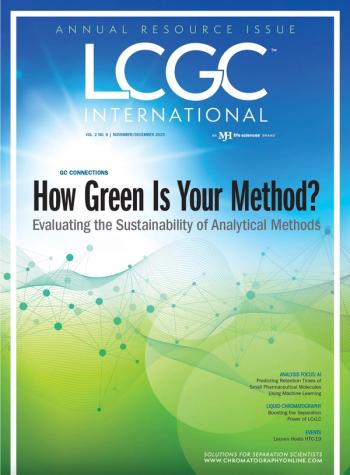
E-Separation Solutions
- E-Separation Solutions-02-09-2012
- Volume 0
- Issue 0
Daniel Armstrong on Ionic Liquids, Capillary Electrophoresis, and Future Research
Interview with Daniel Armstrong, Professor of Chemistry & Biochemistry, and the Robert A. Welch Chair of Chemistry at the University of Texas at Arlington.
LCGC recently interviewed Daniel Armstrong, Professor of Chemistry & Biochemistry, and the Robert A. Welch Chair of Chemistry at the University of Texas at Arlington on his research and upcoming presentations at Pittcon.
Please tell us about your recent work with ionic liquid (IL)–based capillary gas chromatography (GC) methods coupled with thermal conductivity detection (TCD) to determine the water content in liquid samples.
Armstrong: Ionic liquids are the first new class of GC stationary phases in many decades. They are mostly orthogonal to conventional molecular stationary phases. We have synthesized ILs to accentuate a variety of desirable properties — from unique selectivity to high stabilities. Recently, we synthesized three IL stationary phases that are completely stable to water and oxygen even at high temperatures. In addition, they were engineered to produce efficient, symmetrical water peaks. This allowed us to quickly and effectively measure water concentrations in all manner of samples and solvents. Conversely, we can easily separate low levels of organics from water and quantify them. This is a modern, more broadly applicable and effective manifestation of a packed column method I used back in the 1970s. Then we used a molecular sieve as the stationary phase. This only worked well for a few specific sample types. Today with ILs, we analyze more diverse samples at any concentration and do it more quickly and accurately. The same columns can be used to analyze the water vapor content of gases.
Articles in this issue
almost 14 years ago
Advances in Ionic Liquids for GCalmost 14 years ago
AB SCIEX and Phenomenex Partner to Improve Food Safety TestingNewsletter
Join the global community of analytical scientists who trust LCGC for insights on the latest techniques, trends, and expert solutions in chromatography.



